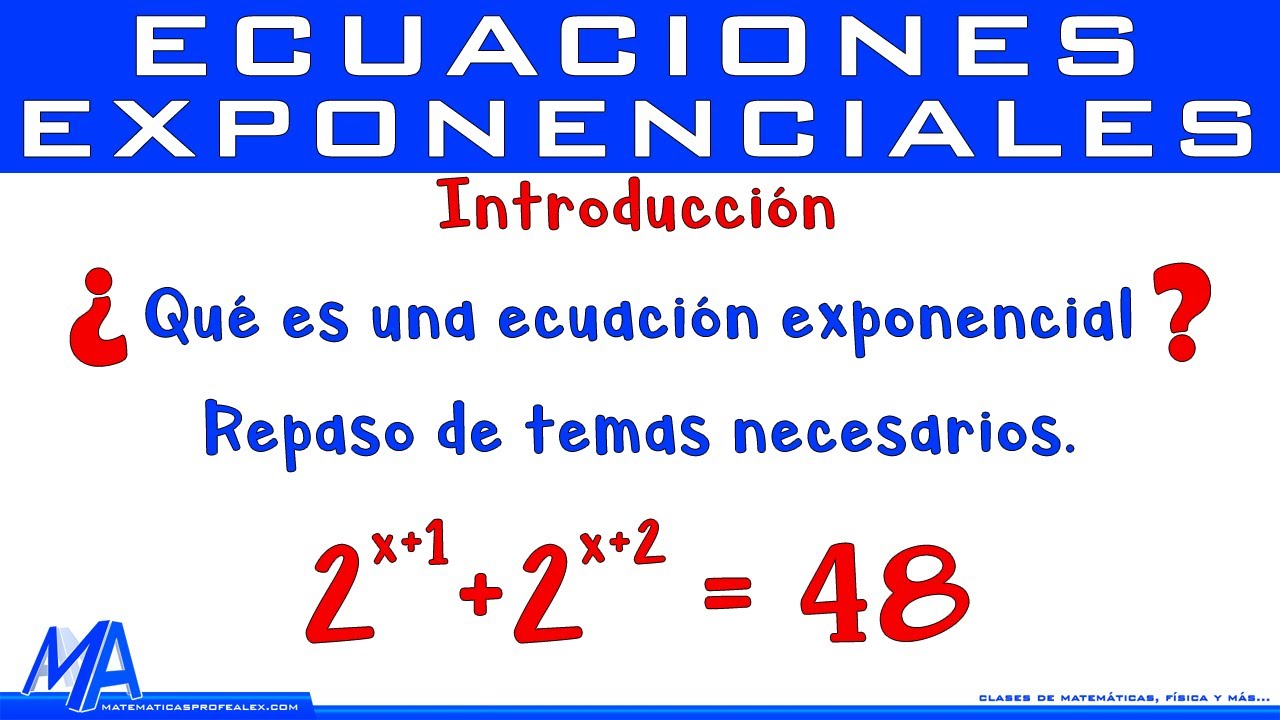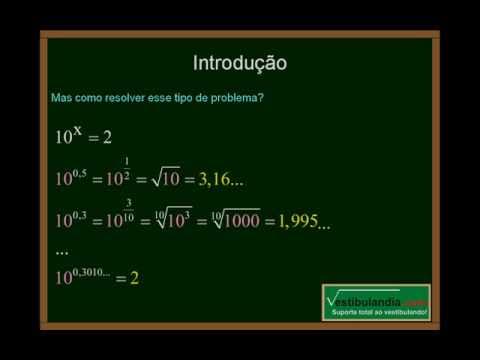Equações exponenciais
Summary
TLDRThe transcript explains the process of solving exponential equations, emphasizing the importance of having equal bases. The speaker demonstrates how to solve equations by converting both sides to the same base, such as turning 625 into 5^4. The process includes steps like decomposition and simplification, where numbers are divided by their base until a solution is found. Examples like 2^3 = 8 and the use of powers of 10 are covered, showing how equations with different bases can be solved by equating their exponents. The overall focus is on using exponentiation and decomposition to solve exponential equations efficiently.
Takeaways
- 😀 Exponential equations involve variables in the exponent position, such as 5^x = 625.
- 😀 To solve exponential equations, the goal is to make the bases on both sides the same.
- 😀 Once the bases are the same, the exponents can be compared directly to solve for x.
- 😀 Decomposition of numbers into their prime factors is a key technique for matching bases in exponential equations.
- 😀 For example, 625 can be decomposed as 5^4, allowing you to solve 5^x = 625 by setting x = 4.
- 😀 When working with numbers like 8 and 27, you can decompose them into prime factors (2^3 and 3^3, respectively) to compare the exponents.
- 😀 Equations like 2^(x+1) = 2^3 can be simplified by comparing the exponents, resulting in x + 1 = 3.
- 😀 In the case of negative exponents, the same process applies. For example, 10^(x+3) = 0.01 is solved by recognizing 0.01 as 10^-2.
- 😀 After matching the bases, solve for x by equating the exponents, such as x + 3 = -2 in the previous example.
- 😀 Using powers of 10 is common in exponential equations, especially when dealing with very small or very large numbers, like 10^(-2) = 0.01.
Q & A
What is the main goal when solving exponential equations?
-The main goal when solving exponential equations is to make the bases of both sides equal, allowing you to compare the exponents directly.
How do you solve the equation 5^x = 625?
-To solve 5^x = 625, first express 625 as a power of 5: 625 = 5^4. Therefore, x = 4.
Why is it important to decompose numbers when solving exponential equations?
-Decomposing numbers into their prime factors helps express them with the same base, making it possible to compare the exponents and solve for the variable.
In the example 2^(3(x+1)) = 2^3, how do you solve for x?
-Since both sides have the same base (2), you can equate the exponents: 3(x + 1) = 3. Solving this gives x + 1 = 1, so x = 0.
What method is used to solve equations involving powers of 10, such as 10^(x+3) = 0.01?
-In equations involving powers of 10, you can express both sides with the same base. For example, 0.01 = 10^(-2), so you have 10^(x + 3) = 10^(-2). Since the bases are the same, you can set the exponents equal, leading to x + 3 = -2. Solving for x gives x = -5.
How do you handle an equation like 2^3 = 8?
-In this equation, you recognize that 8 is equal to 2^3, so the equation 2^3 = 8 is true by definition. No further solving is needed.
What is the general approach for solving exponential equations with different bases?
-When the bases are different, try to decompose each number into prime factors or powers of the same base. Once the bases are the same, you can compare the exponents.
Why do we compare exponents once the bases are equal?
-Once the bases are equal, the exponents must also be equal for the equation to hold true. This allows us to solve for the variable directly.
What is the significance of using decompositions, like breaking 8 into 2^3 or 27 into 3^3?
-Decompositions like these are crucial because they allow you to express both sides of the equation with the same base, which makes it possible to compare the exponents and solve for the variable.
Can exponential equations always be solved by making the bases equal?
-Not always. If the bases cannot be made equal (e.g., when the numbers are not powers of the same base), other methods, such as logarithms, might be needed to solve the equation.
Outlines

Cette section est réservée aux utilisateurs payants. Améliorez votre compte pour accéder à cette section.
Améliorer maintenantMindmap

Cette section est réservée aux utilisateurs payants. Améliorez votre compte pour accéder à cette section.
Améliorer maintenantKeywords

Cette section est réservée aux utilisateurs payants. Améliorez votre compte pour accéder à cette section.
Améliorer maintenantHighlights

Cette section est réservée aux utilisateurs payants. Améliorez votre compte pour accéder à cette section.
Améliorer maintenantTranscripts

Cette section est réservée aux utilisateurs payants. Améliorez votre compte pour accéder à cette section.
Améliorer maintenant5.0 / 5 (0 votes)






